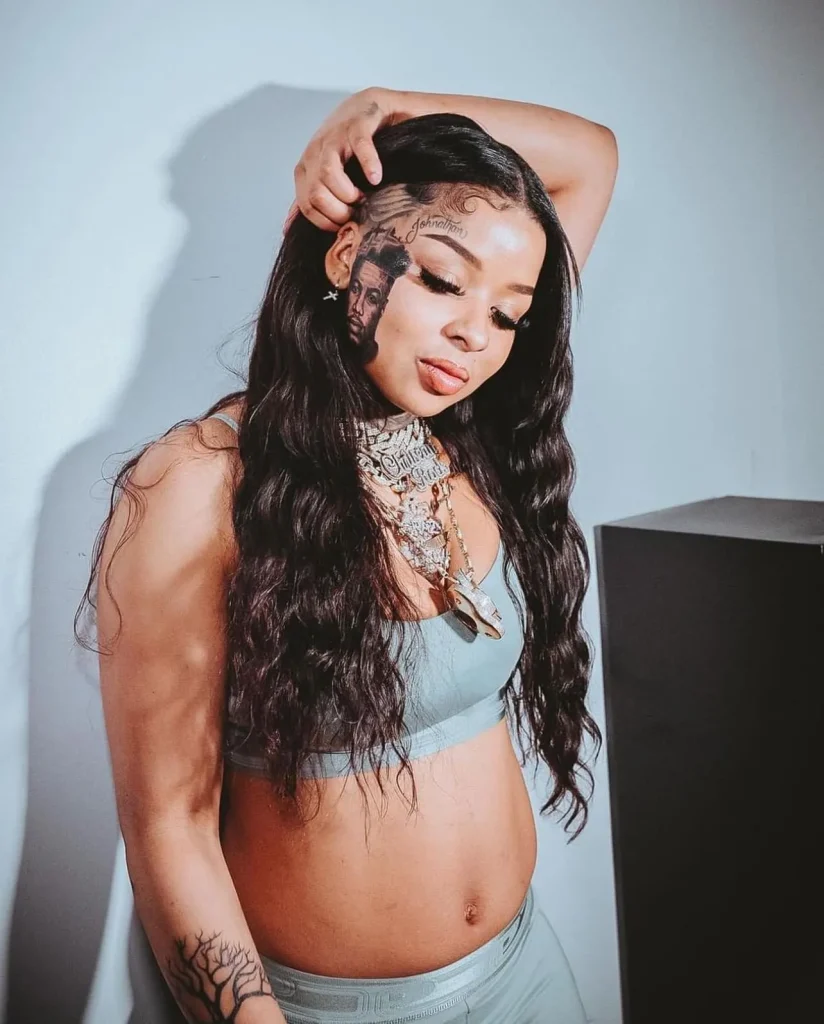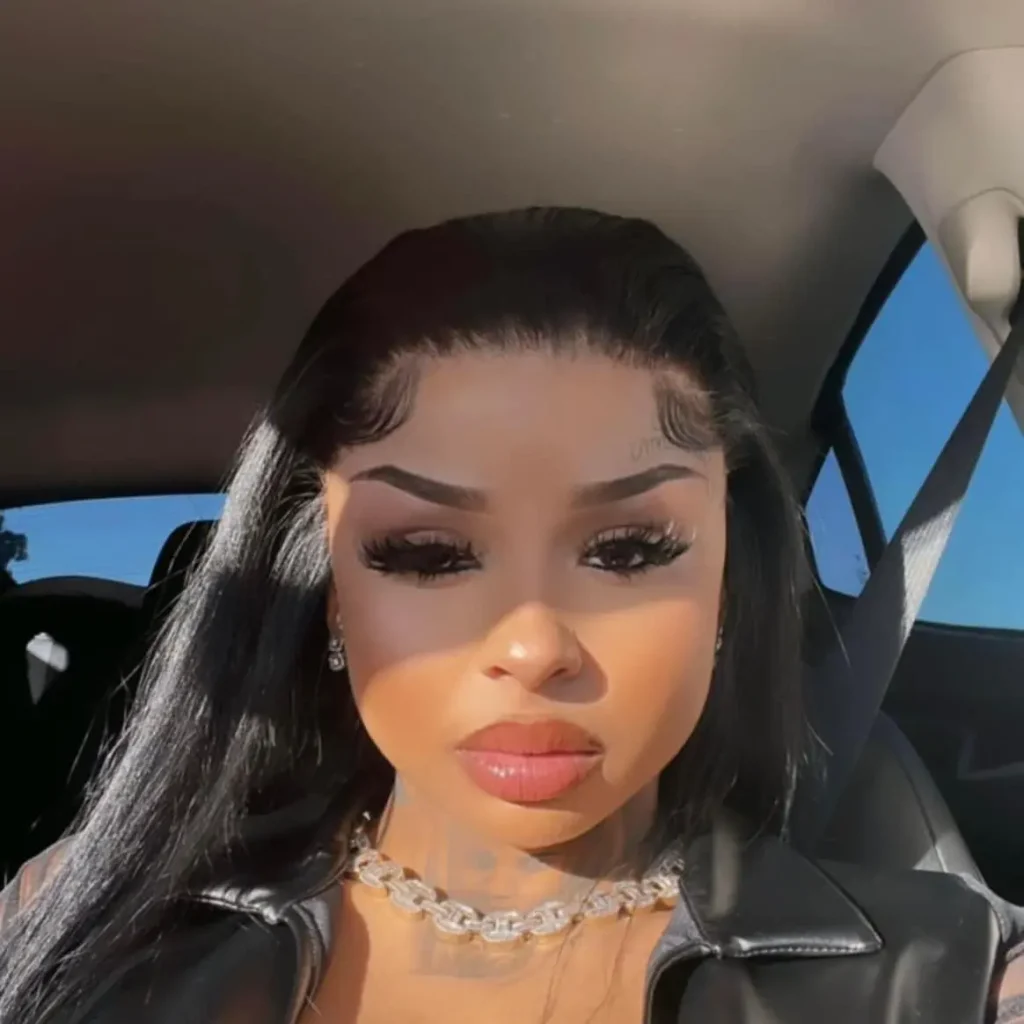In the world of unconventional reality television, rapper Blueface ventured into uncharted territory with his OnlyFans show, “Blue Girls Club,” a 21-day program that unfolded a mix of physical fights, twerking, sex toys, drinking games, and even the shared experience of getting matching tattoos. However, the aftermath reveals a different story, with some participants expressing trauma, injuries, and a sense of disillusionment.

The reality show, shot in October 2020, brought together ten women in a chic Hollywood home, navigating through chaos orchestrated by Blueface and Chrisean Rock. The production featured physical altercations, twerking sessions, and a specially constructed underground boxing ring. The 18-episode journey aimed to provide exposure and connections in the participants’ respective industries, using the allure of potential viral fame as its primary incentive.
Unlike traditional reality shows, “Blue Girls Club” lacked a cash prize or a clear path to victory. Participants signed up with the hope of leveraging the platform to promote their social media profiles. However, five contestants who shared their experiences with Insider revealed that the promised exposure and industry connections did not materialize as expected.
Instead, the women found themselves immersed in a turbulent environment marked by constant conflict. They detailed instances of physical altercations, with one notable incident involving a woman hurling a porcelain bowl during episode four. The lack of compensation, coupled with the absence of medical or psychological professionals, left participants grappling with the aftermath of their reality TV venture.
Blueface’s unconventional approach to reality programming raises questions about the ethical considerations and well-being of participants in such shows. Season two of “Blue Girls Club” continues, but the revelations from former contestants shed light on the darker side of seeking fame through unconventional reality experiences.
Attempts to obtain comments from Blueface (Johnathan Jamall Michael Porter) and Sunlit Media, one of the production companies involved in the OnlyFans reality show “Blue Girls Club,” were met with silence. The five remaining contestants either did not respond or chose not to comment on their experiences.
Blueface’s vision for “Blue Girls Club” drew inspiration from the classic reality TV formula, aiming to create a digital-age version of the popular “Bad Girls Club.” The show adhered to the established reality TV ingredients of placing individuals with contrasting personalities in a controlled environment, fostering romance, alliances, conflicts, and drama. Taking this format to OnlyFans, a platform traditionally utilized by s*x workers for online pay-per-view content, Blueface hoped to offer a unique and engaging experience.
At its peak, approximately 4,000 users subscribed to Blueface’s OnlyFans account, paying monthly fees ranging from $30 to $50 for the content. With this user base, the subscription fees could have accumulated between $100,000 and $200,000 per month. However, the contestants interviewed by Insider claimed that they did not receive any compensation for their participation.
Dancing emerged as a common activity in the house, with one contestant expressing the belief that she did not garner the promised exposure because chrisean rock parents refrained from explicit activities compared to some fellow contestants. In the absence of traditional media support, Blueface and his team adopted a streamlined approach, enlisting the help of family members and managers, including Wack 100 and Bravo, for security. They opted for a small team of production companies to handle the filming, bypassing the need for a massive crew.
Contestant Kayla Stinson, nicknamed Storm in the house, disclosed that the men in the house had “free rein” to move around as they pleased, even entering women’s bedrooms, which lacked locking mechanisms, leading to a complete lack of privacy. The revelations from participants shed light on the challenges and shortcomings of this unconventional reality show, emphasizing the need for ethical considerations and participant well-being in such productions.
Living conditions in the house were challenging for contestants, with minimal food supplies, primarily consisting of “ramen noodles and Domino’s.” Alcohol was abundant, while phones were periodically returned to participants for livestreaming and show promotion. Unlike traditional reality shows, “Blue Girls Club” lacked medical or psychological staff, raising concerns about participant well-being.
The initial days of filming witnessed chaos, with fights and accidents unfolding. Contestants reported incidents, including a broken leg suffered by Danielle Denson and a lost tooth by Chrisean Rock networth during confrontations. Security guards, also serving as producers, allegedly instigated conflicts among the women, asking provocative questions and exacerbating tensions.
Bed shortages further fueled tensions, as the initially planned eight contestants fought over the available beds. Allegedly, some participants engaged in conflicts solely for camera time, anticipating security intervention. Approximately 14 major fights were captured on OnlyFans, but contestants claimed numerous undocumented altercations occurred off-camera.
The show lacked a structured narrative, leading to unpredictable scenes ranging from trying sex toys to feeding ducks at the park. Contestants, including Zia and chrisean rock vibe, expressed the traumatizing nature of the experience, with some wishing for a scripted format to mitigate the heightened drama.
Zia recounted being assaulted multiple times, highlighting concerns about security and personal safety. Porter’s response to Zia’s complaints raised further questions about the show’s handling of conflicts and participant well-being.
Accusations of manipulation and behind-the-scenes strategizing emerged, with claims that drama was orchestrated to boost subscriptions. Contestants believed that special treatment was afforded to those bringing in subscriptions, impacting the show’s integrity. Amberlyn Reney noted differential treatment, suggesting that some contestants were sent home for misbehavior while others, like Malone, were retained.
Overall, the contestants’ testimonies shed light on the tumultuous and unregulated environment of “Blue Girls Club,” underscoring the importance of ethical considerations in reality show productions.
FAQs
How much does Blueface make off of OnlyFans?
In an Instagram Story he posted earlier this week, the “Stop Cappin” rapper revealed the total amount of money he earned since joining OnlyFans. The screenshot he posted shows that he made a total of $798,800.26.OnlyFans is a platform where creators can monetize their content, and subscribers pay a fee to access exclusive material. The amount a creator makes depends on factors such as the number of subscribers, subscription fees, and the type of content they offer. Blueface, being a rapper, used the platform to host an unconventional reality show, “Blue Girls Club,” involving 10 women. The revenue generated would depend on the number of subscribers and the subscription fees charged during the show’s run.
Does Blueface have an OnlyFans account?
Blueface had an OnlyFans account where he hosted a reality show called “Blue Girls Club.” In this show, he invited 10 women to live in a house for 21 days, and the content was shared on his OnlyFans account.
About The Author

